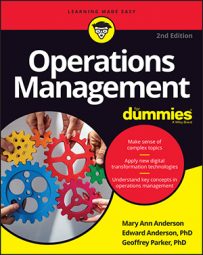It’s important to identify what gives you the advantage over your competitors. These advantages are your core competencies, and you must protect them, especially if you’re planning to outsource any part of your business. These competitive advantages may be in the form of a new technology that you’ve developed, a new process that you’ve implemented to make a product, or a new way to use an existing methodology.
If these advantages involve any form of intellectual property, then you may want to consider protecting them by obtaining a patent. If a patent isn’t the right choice, you have other options as well.
Patents to protect core competencies
Preparing and applying for a patent is a time-consuming process and can prove to be quite expensive. However, if your invention is essential to your business’s success, getting a patent may be worth the time and cost. You can obtain three types of patents in the United States:
The utility patent is the most common and represents approximately 95 percent of patents currently issued. Utility patents cover the invention of or improvement to a new and useful process, machine, or product. They protect the way something is used and works.
A design patent protects the appearance of an invention. It covers only a product’s external appearance. You can apply for both a utility and design patent for the same invention.
Plant patents are very rare and are issued for newly invented strains of asexually reproducing plants.
Unfortunately, having a U.S. patent doesn’t mean that your invention has global protection on infringement. In fact, every country has its own patent process, and a patent is protected only within the country in which it’s issued. This can be a real problem for companies that have a global presence and utilize a globally dispersed supply chain.
Other ways to protect intellectual property
Patents aren’t your only option. Following are some additional means of protecting your core competencies:
Copyright protection: Copyrights provide protection for original creative works such as books, movies, musical songs, computer software, and architecture designs. A copyright protects you from others copying your work.
Copyrights apply to published and unpublished works, and there’s no need to officially register the material with the U.S. Copyright Office, although this step will help if there’s ever a legal dispute over the material. Unlike patents, which have a defined expiration date, a copyright gives exclusive rights during the life of the owner, plus 70 years.
Trademark protection: A trademark is any symbol, word, or phrase that a company uses to distinguish its goods or services. Trademarks can also include sounds or colors. A familiar trademark is Coke. Trademarks are registered with the U.S. Patent and Trademark Office, just like a patent. However, you can renew them indefinitely, as long as you use them for business purposes.
Trade secrets: A trade secret is a formula, recipe, ingredient, or practice that a business uses to provide a good or service. As the name implies, the information isn’t known to the public, and the business must derive some economic benefit from it. Because it’s necessary to keep the information from the public, trade secrets aren’t registered like patents and trademarks.
Familiar trade secrets are the formulas for Coke and Bush’s Baked Beans. Trade secrets are generally protected by contracts, such as noncompete clauses and nondisclosure agreements made between the company and the few individuals who know the secret.

